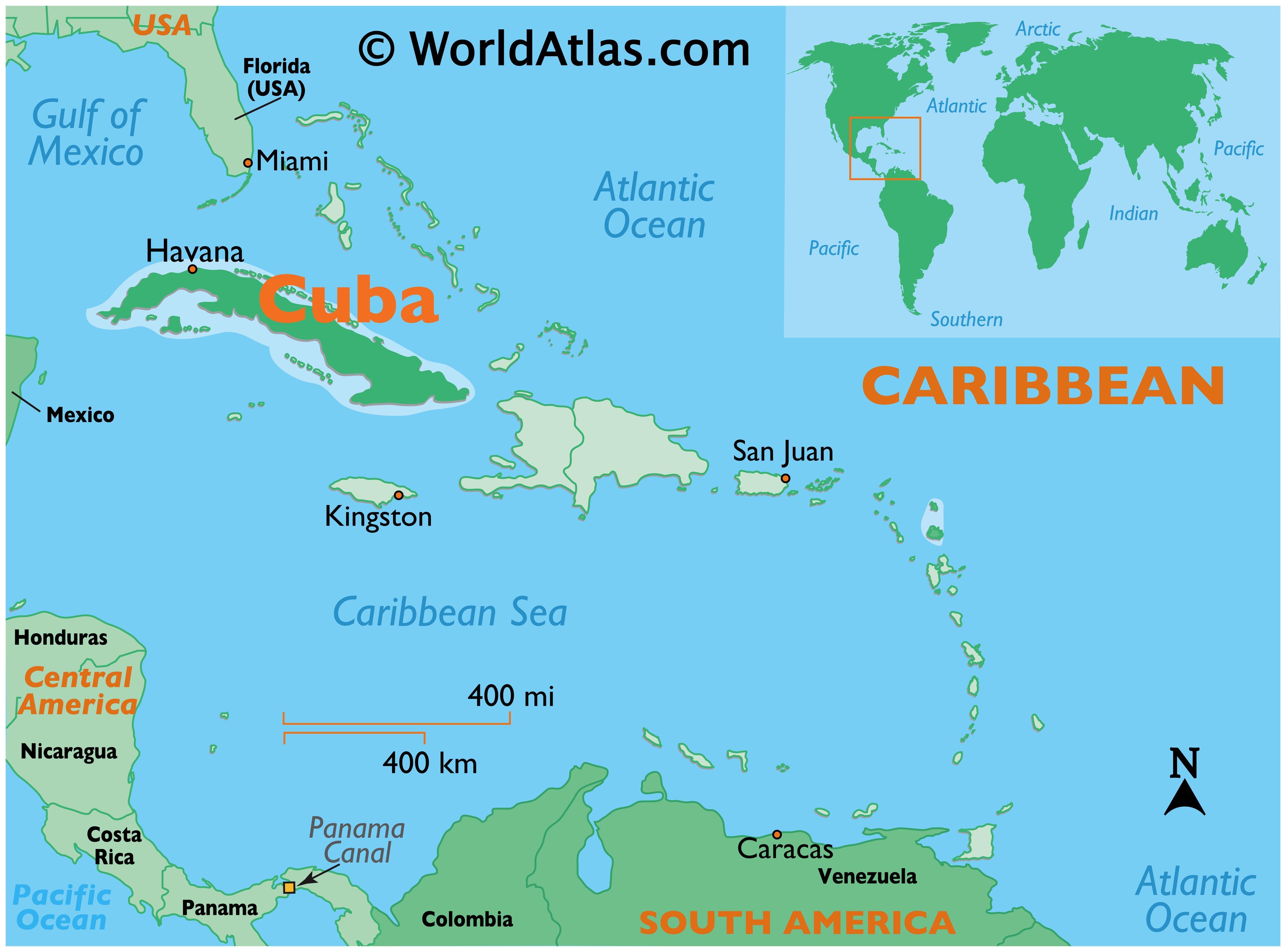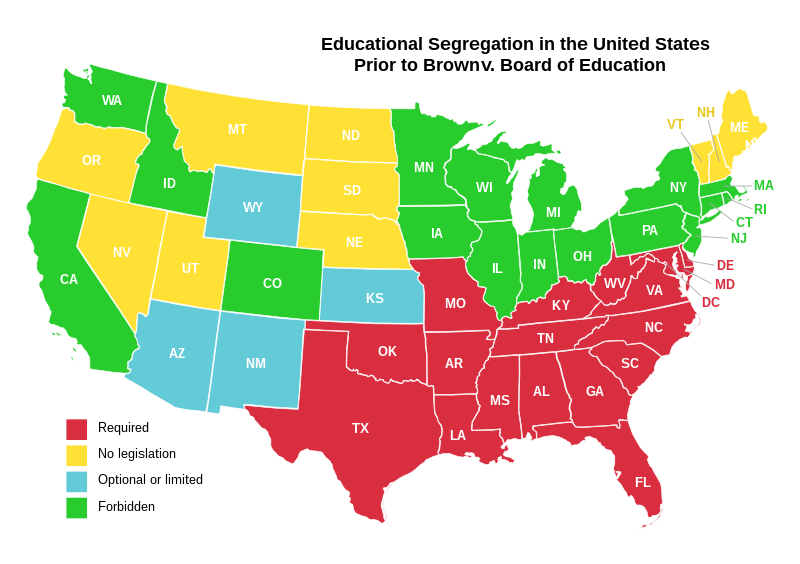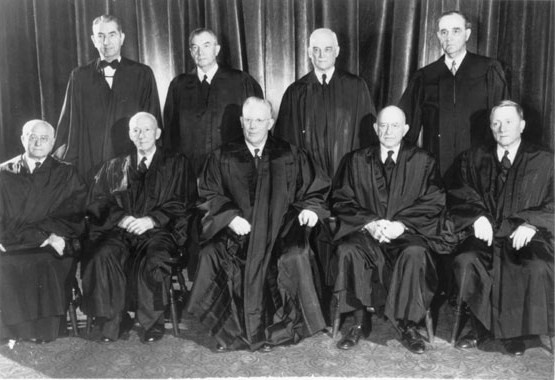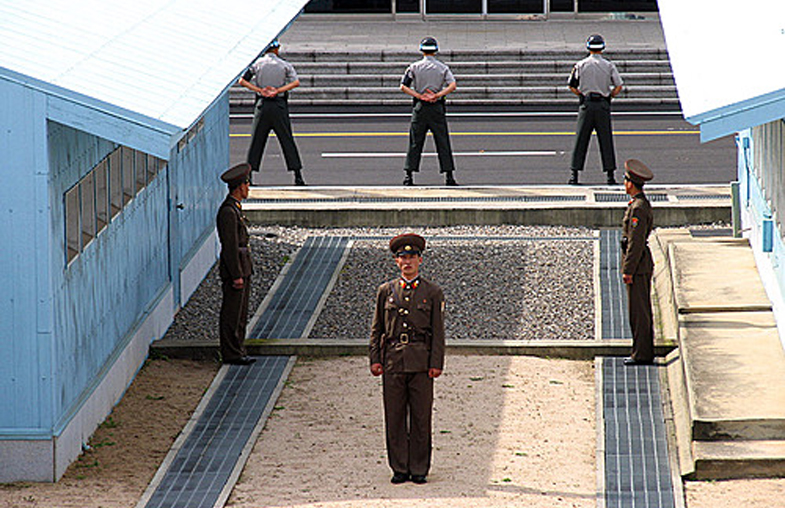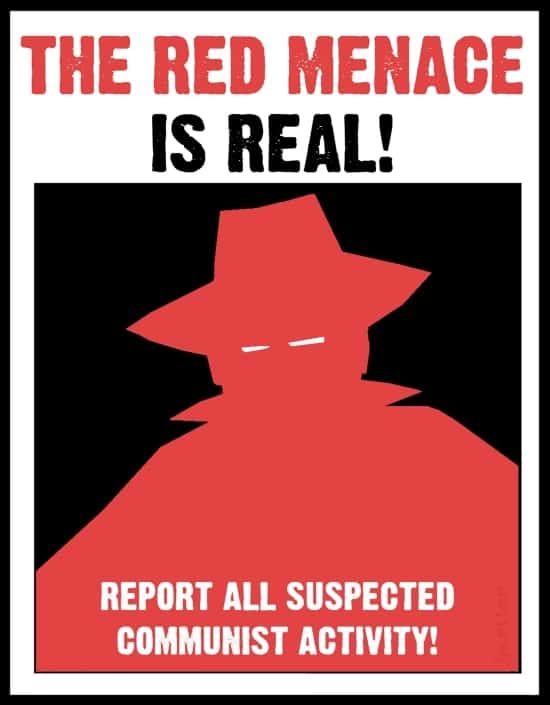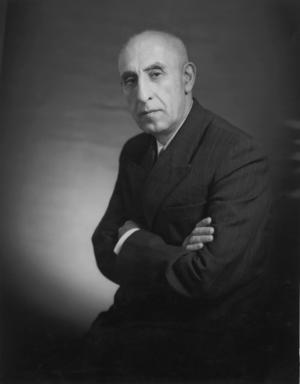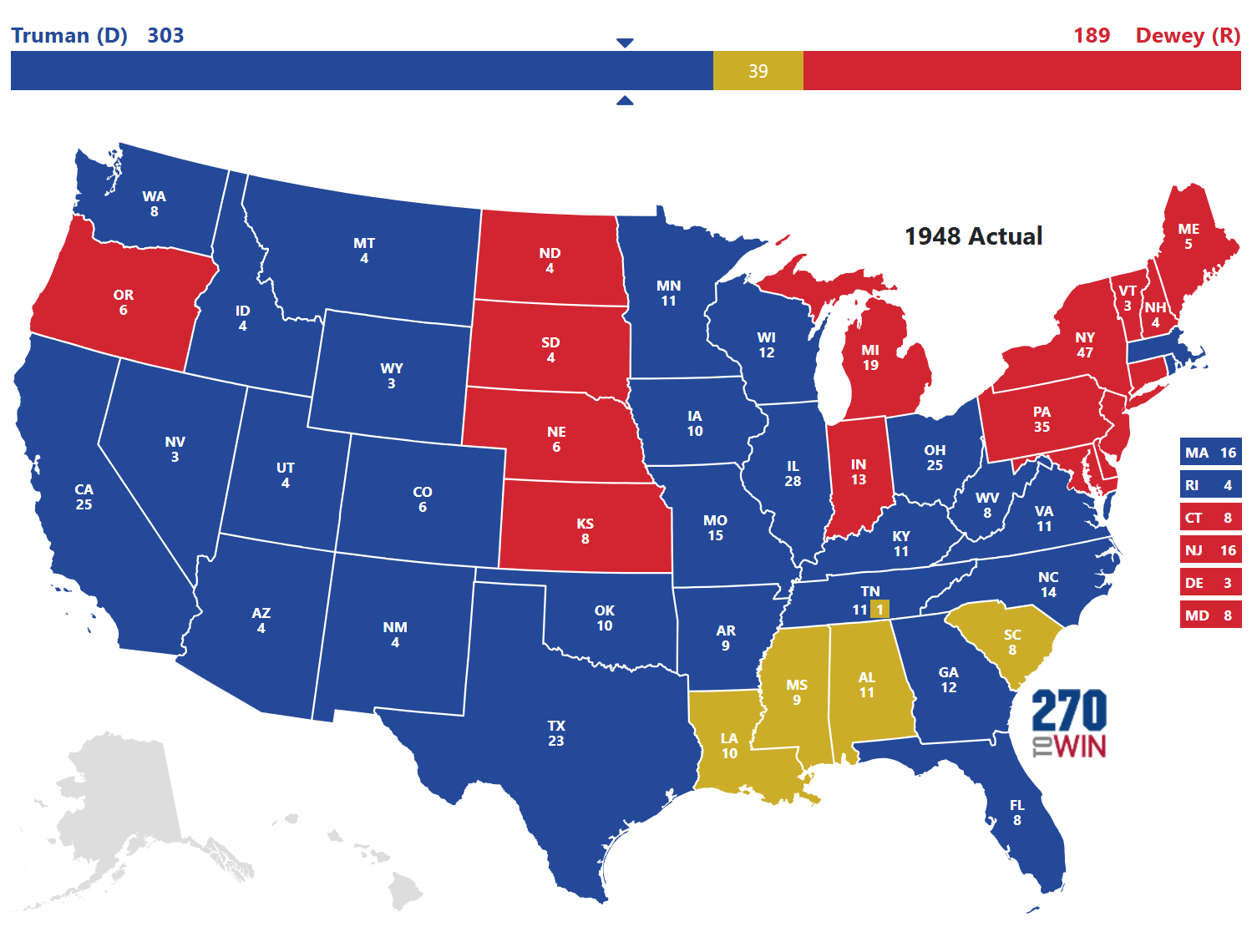I created this blog, Mr. Coates' History Class, as a tool for a hypothetical eleventh grade US History II class, and, over the month that I worked on it, I curated articles as if the classroom's units were spanning the years 1948 to 1963, focusing mainly on US history but including international events when appropriate. I personally wrote five longer form blogs, and included three written by friends who were writing as if they were my students. I also posted four shorter entries, with links to videos and podcasts, often ending with prompts that my pretend students would write. My blog also included a poll, a contact form, links to more resources, a section for upcoming homework assignment reminders, and an easily navigable directory of past articles. In addition to these sections of the blog itself, I also created a teacher twitter, @coateshistory , which I used as if I were teaching a course that used this blog and I posted on it whenever I had updated the blog.
This was easily my favorite assignment for this class (and perhaps any of my classes) this semester. I really enjoyed getting to design a blog, getting to write articles to a student audience, and enlisting my friends to write articles and to comment on mine (check out the comments on some of these entries to see what I am talking about, specifically the Eisenhower farewell address entry). I had had some previous experience using Blogger, as I used to run a film blog using it, so it was great to try new things within a comfortable framework. I would definitely try to do something similar to this if I found a class I thought I could integrate it well with, and I look forward to this prospect. The only problem with Blogger, and it was not a very big one at that, was that I could not play with the layout or format as much as I would have liked. I am happy with what I ended up with, but at times I was frustrated as I tried to change the way things were laid out and I found myself not being able to do it.
My advice to future students taking this course is to have fun with this project - if it starts feeling like a lot of work, try something else. Only write a blog if the prospect really excites you - while this was a joy to create it also was a lot of work, as I had to do research for each entry and ask several friends to get involved, and I had to be able to work around their schedules. I also had to work on it pretty consistently over two months to get an authentic blog feel - it would not have done to have posted all the articles at once. Experiment with different tools - the internet has several options for whatever you are trying to do. Be careful in writing your rubrics - that was the hardest part of this, in my opinion, as I was having trouble conceptualizing what my project would end up looking like. Be clear in the language you are using and do not trap yourself into doing things you might not be able to do.
Thank you to everyone who read, in my course and outside of it. I look forward to returning to history blogging someday soon.
A blog for Mr. Coates' US History II classes for the 2016-2017 academic year.
Sunday, December 4, 2016
Thursday, December 1, 2016
Who killed JFK Podcast
As we start to reach the time period before the holidays, we are going to continue delving into the presidency and assassination of John F. Kennedy. We are to have a special guest speaker deliver a presentation on this subject by the end of next week, so make sure to familiarize yourself with this historical event. To that end, I invite you to listen to this podcast from Stuff You Should Know titled "Who Killed JFK?" by following this link: http://www.stuffyoushouldknow.com/podcasts/killed-jfk.htm
Wednesday, November 30, 2016
Fidel Castro: Revolutionary and/or Tyrant
1926 - 2016
With the death of Fidel Castro Friday night and our shift in
focus from the Eisenhower administration to that of John F. Kennedy, it seems
appropriate that we look at the rise to power of Castro and why he, almost
sixty years later, still has politicians worldwide fiercely debating his place
in history.
On New
Years Day 1959, Cuban Dictator Fulgencio Batista was forced to flee the country
from Havana airport, following Castro’s successful guerilla war in the island
nation. Batista had ruled the country since 1952, and had actually imprisoned
Castro in 1953, but released him in an effort to appear less like a dictator. The
released Castro travelled to Cuba with a handful of allies, included his
brother Raul Castro and the revolutionary Ernesto “Che” Guevara. What happened
next is nothing short of incredible – travelling through rough seas for over
1,200 miles on a decrepit yacht called the Granma,
Castro and eighty fellow revolutionaries invaded Cuba on 2 December 1956. Hiding
in the mountains, Castro began to lead a guerilla campaign against the Batista
government, and this campaign was able to connect with the Cuban people.
Castro’s transition
to power in 1959 was anything but smooth. Early supporters who had hoped he
would end the dictatorship of Batista and bring democracy to Cuba, were
dismayed as he began to align himself to the Soviet Union, going so far as to
describe himself as a Marxist-Leninist in a speech around this time. In
response to demands that the US withdraw all but eighteen members from their
embassy in Havana, Eisenhower ordered that the US embassy close; it wouldn’t
reopen until 2015. An embargo from the US soon followed, forcing Cuba to rely
heavily on the Soviet Union to buy their sugar and otherwise prop it up economically.
The embargo
would prove to be the least of Cuba’s worries from the United States. On April
17, 1961, three months into the presidency of John F. Kennedy, a
counterrevolutionary army of over 1,400 exiled Cubans, armed and funded by the
CIA, attempted an invasion of Cuba, by way of creating a beach head at the Bay
of Pigs. Castro was prepared for this, and slaughtered the soldiers as they
landed. The counterrevolutionaries were not given the required air nor naval
power, and had failed to take the Cubans by surprised. The invasion was a
spectacular failure, and a complete surrender was offered after only three
days.
From the
Bay of Pigs invasion onwards, Castro would have firm evidence to show that the
United States could not be trusted. The ninety miles between Florida and Cuba
became a sea of distrust and suspicion. Increasingly paranoid, Castro requested
ballistic missiles from Nikita Khrushchev, the leader of the Soviet Union, to
deter future aggression from the United States. President Kennedy was not about
to let missiles to be held so close to the US border, so he sent naval ships
down to blockade the incoming Soviet ships. For thirteen days the heads of both
the United States and the Soviet Union scrambled for a diplomatic solution – in
the end, the Soviets turned around and went home, and the United States agreed
to pull its Jupiter missiles out of Turkey.
This successful
aversion of conflict by the Kennedy administration kept the Cubans from
becoming an existential threat. Castro stayed on as dictator for the next
forty-four years, but we have now reached the end of the history of what we are
concerned with in our class. Fidel Castro, the leader of a Caribbean nation of
eleven million people, certainly punched above his weight. No leader besides
Queen Elizabeth II held onto power longer in the western world. He jailed and executed
rivals, he suppressed free speech, and he continually agitated the United
States. He also improved the country’s access to quality healthcare, brought
about racial integration, and was to a degree successful in managing an economy
without any aid or trade from the United States. His legacy will remain hotly
debated by historians for years to come
Monday, November 28, 2016
John F. Kennedy Inaugural Address
Sunday, November 20, 2016
Three Songs
Listen to these songs by Phil Ochs and Bob Dylan. Read the lyrics along with them. How do these songs reinforce the culture of the 1960s? What are they referring to, specifically - such as when Ochs says "I hate Joe Enlai, I hope he dies"? Draw examples directly from the lyrics. Find one other song from the 1960s that fits these themes. Two paragraphs, due Wednesday.
Monday, November 7, 2016
Student Blog: Constitutionality and Brown v. Board
In 1954, the
United States Supreme Court declared that “separate, but equal” was no longer
constitutional in the United States, overturning Plessy v. Ferguson, and idealistically forcing an equal society for
the first time in U.S. history. The problem? That’s not quite what the decision
said.
Let’s
begin with the background—what lawyers refer to as “the facts of the case.” Thirteen
parents of Topeka, Kansas, public school students filed a class action to force
the district to reverse its policy of racial segregation. The plaintiffs lost
in the district court because, even though the court found that segregation in
public education had a detrimental effect on African-American children, the
schools were substantially equal with respect to buildings, transportation,
curricula, and education. By the time the case went to the Supreme Court, it
had been consolidated with five other cases representative of five other
states, all of which were sponsored by the NAACP. Fun fact: the lead attorney
on this case was Thurgood Marshall.
Things
went differently in the Supreme Court. First, the Court didn’t decide the case
in its first hearing. It asked for a second argument a year after to focus
specifically on the issues raised by the Equal Protection Clause. Second,
before that subsequent hearing, one of the very conservative justices died—to be replaced by Earl Warren, the architect of the single most liberal
Supreme Court in this nation’s history. Thus, in a sixteen page per curiam decision (per curiam being fancy Latin for a
unanimous court), the Court struck down racial segregation. The holding was
quite literally that segregated black and white schools of equal quality were
still harmful to black students, and therefore had to be unconstitutional under
the Equal Protection Clause.
The Warren Court
But
that is where this gets really
interesting. Two points: first, the Supreme Court relied on social science for
the first time in making this decision. The Court pointed to psychology and
other social science studies about the effect of segregation of the
African-American psyche. This was an unprecedented step. To that date, the
Supreme Court had based its decision in legal precedent and statutory
interpretation. To go beyond that, one might argue, was more akin to creating legislation,
rather than judging the law. And as we all know, the power to legislate rests
only with Congress. Second, and most importantly, the Supreme Court did not
automatically end segregation. Contrary to popular belief, Brown told the states to change “with all deliberate speed.” What
does all deliberate speed mean?” No one
really knows.
In
the end, it took a second decision for the Court to delegate orders that
desegregation occur. And it’s taken repeated litigation efforts to get the
Court to not only reaffirm its commitment to what has become affirmative
action, but also to make communities respect the mandate. The Supreme Court has
had to repeatedly decide cases about how schools should be run; how they should
treat their students; how busing routes should be driven; and
more. This may seem like what the Supreme Court is supposed to do, but let’s
remember the contours of the actual decision: was Brown meant to go that far? Or should Congress have stepped in and
done the actual governing? Should the individual state communities have created
their school standards? Should the Court have reviewed them on appeal, rather
than created the guidelines that individual communities then had to wrestle
with?
All these answers depend on your view of the Court’s role in our constitutional
structure. But at the end of the day, only the right to equality exists in the
Constitution. Separate but equal is unconstitutional. And so, perhaps, is a
Court that legislates from the bench.
By Laura Ferguson
Sunday, November 6, 2016
The Korean War: Police Action
The Korean Demilitarized Zone
Roughly
halfway down the Korean peninsula lies the Demilitarized Zone, an armored
border stretching roughly two hundred and fifty miles from the east coast to
the west coast and about two and a half miles wide throughout. This border
divides the peninsula into The Democratic People’s Republic of Korea, or North Korea,
from the Republic of Korea, or South Korea. This border, which runs on the 38th
latitudinal parallel, holds in place a shaky cease-fire that was signed in 1953
following the end of the Korean War. How and why was Korea divided? To
understand that we must turn the clocks back to the late 1940s, and trace the
origins and the fallout of the Korean War.
Towards the end of the Second World War the Soviet Union joined her allies in the war against
Japan. Soviet troops made their way halfway down the Korean peninsula before
the bombings at Hiroshima and Nagasaki signalled the end of the war, and
thereafter Korea was occupied and controlled by a joint Soviet and American
Military Government. This commission failed to make progress on creating an
independent Korea, and elections held in 1948 attempting to set up a new
sovereign state were met with boycotts and violence from the Korean communists.
The results of these elections set up a government located in the Southern city
of Seoul, while the Soviets set up a communist government based out of
Pyongyang soon thereafter, led by a man named Kim Il-Sung. This was followed by the United States
and Soviet Union pulling out of the Korean peninsula by 1949, and allowing
these two new states to develop on their own. Both sides, however, began planning for future reunification - peacefully or otherwise.
In
1950 Kim Il-Sung, backed politically and economically by the Soviet Union and
militarily by the newly formed Communist Chinese state, invaded South Korea,
believing that the people would welcome him as a liberator. As Russia was
boycotting United Nations meetings and the Communist Chinese weren’t yet internationally recognized, the Security Council voted unanimously to have member states
support South Korea militarily that June. However, by September the
Communists had overrun almost the entirety of South Korea; something drastic
was needed. On September 15, the United Nations began the battle of Inchon, an amphibious invasion under the
command of General Douglas MacArthur that provided a clear victory and a
strategic reversal. Within the next two months
MacArthur’s forces would push their way northwards, soon making their way
passed the 38th parallel and eventually to within miles of the
Chinese border. This was met with a major invasion by the Chinese, which pushed
the fighting back to the 38th parallel, where the fighting was localized
for the remainder of the war.
These
quick troop movements up and down the peninsula before settling into a longer
stalemate at the 38th parallel were incredibly deadly. The majority of the
war’s casualties fell in this period, which included some 2.5 million between both
sides. Halfway through 1951 both countries accepted that they had reached a
stalemate, and little territory was exchanged as fighting continued. General
MacArthur argued that the allies should extend the war into China, which was rebuked by the US government as many feared this would lead to another world war. He sent cables to members of the House of Representatives
defending his position, and in response President Harry Truman demanded his
resignation. Over the next two years, the two Koreas sought to create a peace
deal, but no resolution could be found that both sides could find agreeable.
During these two years of protracted negotiation Dwight Eisenhower was elected
US President. He had campaigned on ending the Korean War, and immediately set
out to do so. In 1953 an agreement was reached, not in the form of a treaty, but rather a cease-fire;
to this day, the two Koreas technically remain at war.
Discussion
questions, write a paragraph for one:
In many Anglophonic nations, the Korean War
is referred to as the “Forgotten War” – why might this be the case?
Was the United Nations right to act on a
vote that would put the members at war with the Soviet Union and China when
neither was represented in the vote? Why or why not?
President Truman famously referred to the war as "Police Action" - why might he choose to use this phrase to describe such a brutal war that had broad international support?
Saturday, October 29, 2016
Student Blog: Japan's Turn to Pacifism
For
most of today’s young Americans, modern Japan brings to mind anime, sushi, and
all things strange. Probe people for something about Japan with a bit more
historical significance and two locations will immediately come forward: Pearl
Harbor and Hiroshima. Studies of US-Japan relations for most Americans begin
with the former and end with the latter. Studies of US-Japan relations for most
Japanese begin with the latter. It thus surprises many Americans when they
learn that Japan is constitutionally prohibited from going to war.
Imperial
Japan surrendered on August 15, 1945, accepting the terms laid out in
accordance with the Potsdam Declaration. To reach this point, Japan had not
only endured the atomic bombings of Hiroshima and Nagasaki, but also the
wholesale firebombing of most of its major cities, which killed hundreds of
thousands of civilians. Even then, the higher ups in the military wanted to
continue the fight. It was only the intervention of Emperor Hirohito himself
that finally compelled the military to surrender…Why did they go so far?
The
Potsdam Declaration called for, in addition to relinquishing conquered
territories, Japan’s “unconditional surrender.” To the higher ups, this meant
the dismantling of the Japanese imperial nation-state as it had existed since
1868, and further, the potential dissolution of the imperial system in its
entirety. For the last 1,000 of the roughly 2,600 years (a good portion likely
mythical) of the imperial line, the emperor had not been much more than a
symbol, often to legitimize the rule of powerful samurai families. The Meiji
Restoration of 1868 put an end to feudal Japan and samurai rule, creating a
modern, constitutional state with the emperor at its center. Vestiges of
samurai culture would persist, but lay dormant as Japan modernized over half a
century, only coming back to the fore as the military took control of the
country in the 1930s.
MacArthur with Hirohito
Though
the allied forces did end up abolishing the “Empire of Japan” during the
occupation from 1945 to 1952, in a turn of events that surprised even Emperor
Hirohito himself, the U.S. decided not
to force his abdication and abolish the imperial system. This was not, of
course, out of some respect for the ancient tradition, but for—much like the
samurai of old—utilizing the imperial institution to more easily maintain
control over and carry out reforms of occupied Japan.
Indeed,
Emperor Hirohito had one of the most unique experiences in human history: from
being worshiped as a living god and the bedrock of the militarist state that
compelled its citizens to fight and die in his name, to being “the symbol of
the State and of the unity of the People, deriving his position from the will
of the people with whom resides sovereign power” (Constitution of Japan).
Moreover, this new Japanese “State” would make pacifism one of its most
important values, expressed through Article 9 of the Japanese Constitution
established in 1947, which fundamentally renounces war as a political tool of
the state.
Article 9. Aspiring sincerely to
an international peace based on justice and order, the Japanese people forever
renounce war as a sovereign right of the nation and the threat or use of force
as means of settling international disputes. In order to accomplish the aim of
the preceding paragraph, land, sea, and air forces, as well as other war
potential, will never be maintained. The right of belligerency of the state
will not be recognized.
However,
with the victory of the Communist Party of China in the Chinese Civil War in
1949 and the outbreak of the Korean War in 1950, the U.S. backtracked its
position on the matter and Japan would create a “Self Defense Force” in the
1950s consisting of land, sea, and air forces with a legal status that views it
as an extension of the national police force prohibited from engaging in
conflict unless Japan is directly attacked. Extensions of the size and role of
the Self Defense Force remains a contentious issue within Japan and the call to
revise Article 9 by the current ruling party are as of now widely unpopular
among Japanese. Time will tell if the push of certain domestic politicians
coupled with changing geopolitical conditions, a rising China and a potential
retreat of the US military from the Asia-Pacific region will lead Japan to once
again have an unrestricted military.
By Matt D'Elia
By Matt D'Elia
The Nifty Fifties
Baby Boomers, Dwight Eisenhower, full employment,
poodle skirts and Leave it To Beaver. These are some of the hallmarks of the
1950s, a decade which saw the rapid growth of the US economy that has since
left it as, how many a politician will articulate it, "the greatest
country on Earth". Following the Second World War, the United States was
the only nation which had emerged with its economy, borders, and population
intact. The decades of depression and war, which had seen the unemployment rate
jump to a high of 24%, were over. A growing middle class was moving from
the cities into the suburbs, having lots of children, and achieving their
aspirational dreams of home ownership.
This was the decade of American
prosperity, and this was reflected in the culture. TV shows such as Leave it To Beaver helped to emphasize “education, occupation,
marriage and family … as requisites for a happy and productive life.” A young
truck driver from Tennessee named Elvis Presley was discovered recording a song
for his mother at a studio and became on overnight sensation. A movie star
named Marilyn Monroe became one of America’s first, and easily most
recognizable, sex symbol. Authors such as Jack Kerouac and William S. Burroughs
experimented with literature to create new forms, now known as beat poetry.
In terms of foreign affairs,
America had pivoted from worries about her former enemies in Japan and Germany
to the Soviet Union. Inside of the United States, a senator from Wisconsin
named Joe McCarthy fueled tensions by claiming that members of the State Department,
the Truman administration, and the film industry were communists, causing what
became known as the “Red Scare”. Many people unfairly lost their jobs after
having to testify before the House Un-American Activities Committee. McCarthy
was ultimately censured by the Senate in 1954 and died of alcoholism in 1957,
but his name has since been synonymous with witch hunting in American politics.
The Russians, for their part, scared the American populace more than McCarthy
ever could by launching Sputnik, the first satellite that made it into space,
in 1957.
The 1950s were also the decade
that America had to come to stark terms with the problems of segregation and
racial violence. A young Baptist preacher named Martin Luther King began to
organize bus boycotts and marches in 1955. Later that year, a young
secretary named Rosa Parks refused to give up her seat on a bus, leading to a
publicized arrest which drew American attention to civil rights issues. Most
important was the unanimous Supreme Court decision for Brown Vs Board of
Education of Topeka Kansas of the year before that stated that Separate but
Equal was unconstitutional, and that schools would have to integrate. President
Eisenhower was forced to call in the National Guard to Arkansas when the governor
refused to end segregation in this state.
The 1950s were a turning point
for America; as British power was waning, the title of World Super Power was
transferred to the United States, with only the Soviet Union able to contest
this. Inside the borders, Americans were working more, having more children,
and building long term wealth. The issues of civil rights, long ignored, were
finally coming to the forefront. This changing of the guard was reflected in
the music, film, and literature of the time, giving rise to the dominance of
American culture more globally.
Assignment: Watch this episode of Leave it To Beaver, and write two paragraphs describing what 1950s values the episode is reflecting. Due in class Monday.
Monday, October 24, 2016
Student Blog: Blood, Money, and Oil: Iran in 1953
The year of 1953 proved one of the
more fateful in the history of American foreign policy. The headline grabbing
concerns of the age – nuclear war, communist expansion – certainly overshadowed
the goings on of a then little thought of nation in the Middle East – Iran.
Listening to the mass media and
political posturing coming from the United States today may leave you with the
view that Iran is perhaps one of the most virulent enemies of the West. The use
of synecdoche here and ubiquitously throughout the short hand of geopolitics is
dangerous to say the least. One must take into account most Iranians are not
fond of their government – much in the same way that most Americans are not
fond of their government. And that the use of the name of a nation to describe
the actions of its government paints the entire population of that nation with
the same brush. Thus when a US President calls Iran evil, he
ends up calling
millions of innocent and potentially sympathetic Iranian citizens evil. The
racism here should be obvious. But as an experiment, this article will use this
same manner of discourse to refer to the actions of a handful of actors within
the US government in the discussion of a successful coup in Iran that took
place in 1953.
The roots of the coup are complex
but America’s involvement (and by America I mean any and all US citizens living
or dead) is really quite simple. The twentieth century will be remembered in
Middle East as the century in which everything about everything changed
irreversibly. The collapse of the Ottoman Empire and the discovery of oil would
welcome years of Western meddling, leading towards generation after generation
of armed conflict. For Iran, this destructive course was initiated by the
efforts of a man named William Knox D’Arcy who in 1908 successfully negotiated
a concession with Qajar dynasty for near total control of oil output from
Persia. Thus the Anglo-Persian Oil company was formed, later the Anglo-Iranian
Oil company, later British Petroleum aka BP (Yeah, these guys are batting a
thousand). This cushy position would continue through the First and Second World
Wars, several regime changes, and right to the birth of the modern state of
Iran.
Mohammed Mosaddegh
This is where things get tricky for
our good friends at the AIOC (Anglo-Iranian Oil Company). In the early 1950’s a
man by name of Mohammad Mosaddegh was voted into the office of Prime Minister
of Iran, and he, being a man of the modern era, a republican, not exactly tied
to any sense of loyalty to past monarchies and their deals with shady no longer
living British aristocratic oil speculators, begins agitating for
nationalization of the oil industry. Now naturally this kind of commie nonsense
was not going to be tolerated by the powers that be, that being the powers that
be in the White House. With some shrewd maneuvering, the AIOC was able to get
the ear of the Dulles Brothers, ardent cold warriors with an inside track to
the President – at the time – Dwight Eisenhower. What happens next is sort of
amazing. A man named Kermit Roosevelt acting on behalf of the CIA flies into
Tehran with a suitcase full of cash. He begins paying off anyone that will
listen to him, building up a coalition to overthrow the prime minister’s
government and replace it with a US backed dictatorship.
I think I just sank the Search Engine
Optimization of this blog post. Mosaddegh was replaced with a western puppet
known as the Shah who was in turn overthrown in 1979. When the dust settled a
harshly anti-western government stood in his place. So if you never understood,
America, why Iran hates you so much… that’s why.
By John Kluxen
Eisenhower's Farewell Address
On January 17 1961, a few days before leaving office, President Dwight Eisenhower delivered his farewell address, where he raised the issue of the Military Industrial Complex. Please watch the video and answer the following questions in the comments.
1) How did the Presidency of Eisenhower influence his views on the military?
2) What does Eisenhower mean when he refers to the Military Industrial Complex? What is he saying about it?
3) How can we view the speech differently today than it was viewed in Eisenhower's own time?
Friday, October 21, 2016
Origins of the Vietnam War
On
September 2, 1945, shortly following the surrender of the Empire of Japan in
World War II, Ho Chi Minh issued the Proclamation of Independence for the
Democratic Republic of Vietnam. Ho was a leader in the Viet Minh independence
movement since the war and had previously lived in the US, the UK, France, the
Soviet Union and China. His proclamation begins by directly quoting from the US
Declaration of Independence and France’s Declaration of the Rights of Man and
Citizen:
All men are created equal;
they are endowed by their Creator with certain inalienable Rights; among these
are Life, Liberty, and the pursuit of Happiness.
This immortal statement was made in the Declaration of Independence of the United States of America in
1776. In a broader sense, this means: All the peoples on the earth are equal
from birth, all the peoples have a right to live, to be happy and free.
The Declaration of the Rights of Man and Citizen of the French Revolution made in 1791
also states: All men are born
free and with equal rights, and must always remain free and have equal rights.
Despite
this shared rhetoric, the French had only just regained control of their
Indochinese colony from the Japanese, and were not about to let Vietnam become
an independent state. What’s worse was that Ho Chi Minh was not trying to
establish a new capitalist republic, but rather a communist state, something
that western countries found unacceptable. The French authority immediately
took up the task of taking down this insurgency, backed with weapons from the
United States. Ho’s forces began to mobilize stronger and receive supplies from
the Soviet Union, and by the end of the forties a full scale war had broken
out. The French sent troops from all over their massive empire to try to quell
the rebellion, but after a decisive loss in 1954 at Dien Bien Phu they decided
to cut their losses and agree to meet to discuss peace terms.
The terms
were settled in Geneva, Switzerland, and stated that Vietnam would be split in
two; the Communists would gain control of the North, while the South would be a
republic that would be given the chance to decide a separate future. An
election was rigged up by the United States and the family of a man named Ngo
Dinh Diem. Diem became the first president of the Republic of Vietnam, and
future elections were canceled. The Eisenhower administration’s internal
polling suggested that the communists could have won about percent of the vote
in this election, and their main concern was keeping the communists out of
power – not creating a democracy.
Diem’s rise to power brought about resentment from the communists in the south,
who began to launch guerilla attacks under the name of the National Liberation
Front (NLF, or Viet Cong) on Republican targets. In response, Diem executed
anyone he could who was guilty of committing political violence, but it was
clear that he did not have the resources needed to fight the Viet Cong on his
own.
President Eisenhower shakes President Diem's Hand in 1954.
In response
to the growing restlessness in the Republic of Vietnam the United States under
President John F Kennedy began to send over military experts to advise the Army
of the Republic of Vietnam (ARVN). Whereas Eisenhower had sent only nine
hundred such advisors, Kennedy sent sixteen thousand. This was accompanied by
increased military activity in the Southern Vietnamese countryside, and ARVN
often came up short against the Viet Cong in battle. The Vietnamese military
high command was growing increasingly impatient with what they perceived as the
weakness for Ngo Dinh Diem, as was the administration of the United States.
Diem became increasingly difficult to work with, and he called for campaigns
that the US did not want to support. In early November of 1963, the CIA
authorized ARVN Generals to overthrow and execute Diem. President Kennedy would
fall to an assassin’s bullet himself less than three weeks later.
Wednesday, October 19, 2016
The US Presidential Election of 1948
The
election of 1948 is often considered a landmark election in the history of the
United States. Under Franklin Roosevelt, the Democrats had won landslide
elections in 1932, 1936, 1940, and 1944. But tragedy struck the United States
when Roosevelt died in April of 1945. The war in Europe was weeks away from
concluding, and Adolf Hitler himself would commit suicide before the month was
out, but the war with Japan raged on. Roosevelt’s death caused his Vice
President, a former Senator from Missouri named Harry Truman, to step into the
Oval Office and become the 33rd President.
Truman
represents a few unique points in American history. He is the only man to have
been the third Vice President to a single President. He is the only President
who fought in the First World War. He was the last President to have not gone
to college. Cool and moderate, Truman had been chosen as a compromise when
Roosevelt ran for re-election in 1944. Those closest to Roosevelt knew of his
ill health, and two camps emerged in the Democratic party over whether or not to keep on the pro labor
and pro civil rights Vice President Henry Wallace, or to replace him with Senator James
Byrnes, a more conservative southerner. Truman was chosen to placate both the
Wallace supporters and Byrnes supporters, and was placed on the ballot with
much enthusiasm. Together, Truman and Roosevelt would go on to win thirty six
states in the 1944 election, handily defeating Governor Thomas Dewey of New
York.
Once
elected, however, Truman was never very close to Roosevelt, and seemed to lack
any individual popularity. In fact Roosevelt never told Truman about the atomic
bombs that Truman would late authorize to be used against Japan. Truman may
have been president during the wars end, but he was never able to claim any
credit for it. He was able to help institute the Marshall Plan, but another
man's name was attached to the project so again, Truman wasn’t able to claim
credit. When he introduced a health care bill to Congress after the war's end, it
was shot down as well. Truman was seen as an accidental President, only there
because of Roosevelt’s death. Things only got worse in 1946 when the
Republicans gained majorities in both the Senate and House of Representatives.
This Congress refused to work with Truman, and went so far as to start repealing
legislation from Franklin Roosevelt’s New Deal. Truman used his Presidential
Veto to prevent any wholesale repealing, but it seemed like he was done.
So in 1948
the Republicans believed that they would easily win the presidential election.
Thomas Dewey, who had run against Roosevelt in 1944, was again their nominee.
The Democrats failed to rally around Truman and split into three parties.
Strom Thurmond, a southern segregationist, feared that the Democrats might
force integration, so he formed a political party called the Dixiecrats. Former
Vice President Henry Wallace, fearing that the democrats wouldn’t do enough for civil rights, formed a
political party called the Progressive Party. The conventional wisdom was that
these parties would siphon off votes from the Democrats, and the polling seemed
to confirm this.
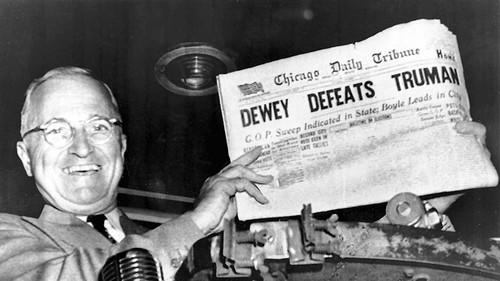
Election
day in 1948 fell on November 2. Truman had run a low money campaign, whereas
Dewey’s campaign had raised substantial sums. Truman’s inner circle had already
begun accepting other jobs, resigned to the fact that their man would lose.
Truman slept through the night, whereas Dewey stayed up to watch the returns.
The Chicago Daily Tribune was so sure
that Dewey would win that they went ahead and printed their newspapers with the
headline "Dewey Defeats Truman". As the
results came in, Truman took the lead in votes, a lead that he would never
lose. Surprise! Harry Truman won by a comfortable three point margin – his
detractors had underestimated him, and he would remain President for another four
years.
Subscribe to:
Posts (Atom)

